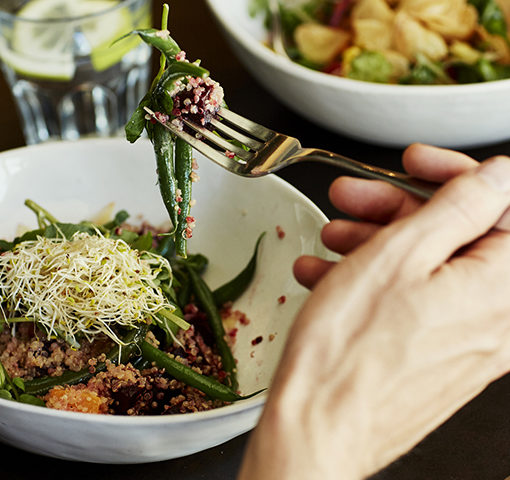Meal planning works for weight loss and can save you time and money so creating the menu for your meal plan is the most important first step.
But if you’re new to it all, you may not know how to meal plan. Or, you may think it’s only for super-organized people who alphabetize their spice racks.
That’s not the case at all.
Learning how to create a meal plan is much easier than you think and can work for pretty much anyone.
Here are some tips for successful meal planning that can help get you started.
This easy guide on how to meal plan will make you a meal plan expert in no time!
1. Look at your lifestyle
“Think about how meals fit into your current routine,” says Cara Harbstreet, M.S., R.D., L.D. “This helps you gain clarity on your goals and expectations, as well as how you can make meal planning sustainable.”
Some reasons for meal planning are saving money, portion control (which also saves money), eating fewer processed foods, or simplifying meal-time decision-making when you’re busy.
Before starting a meal plan, be realistic about how much time you have to prep, cook, clean up, and go to the grocery store.
You may choose to mix home-cooked meals and prepared foods.
2. Start with a week
“If you’re new to meal planning, try tackling a shorter amount of time,” says Harbstreet. “A week is a good starting point.”
Thinking about how to meal plan for the week is doable for most people, but this doesn’t mean you have to cook every day of the week.
Sit down with a calendar, a notebook, a dry erase board, or even your computer and chart out the meals you typically eat each day, such as breakfast, lunch, dinner, and any snacks.
Meal planning happens before you shop for groceries, so that you’re not stuck with a bag of broccoli wilting in your crisper drawer.
3. Fill in the blanks
“Nail down the basics, but stay flexible,” says Rachel Naar, M.S., R.D., C.D.N. “Try to plan meals with four components, a carb, a protein, a vegetable or fruit, and a fat.”
This is the hard part of how to make a meal plan, but it can also the fun part — think of it as a game of Tetris, but with food!
Don’t forget healthy snacks like a nutrient-dense Shakeology smoothie or energy bites to keep your stomach satisfied between meals.
If you’re stumped, go with a daily theme, like Meatless Monday, Taco Tuesday, or Healthy Homemade Pizza Friday.
4. Work your leftover magic
To save time, choose recipes you can slot in for dinner and lunch the next day, recommends Naar, or freeze portions to carry over into a meal plan for a different week.
Another time-saving hack is choosing recipes with similar ingredients to cut down on meal prep and waste. Seasonal vegetables are also a good source of inspiration.
“Chicken, salmon, rice, and quinoa are some solid staples,” says Naar. “But also work variety into your meal plan.”
5. Keep it simple
The goal of a meal plan is to help you shop wisely and plan ahead, not prove your culinary mastery, explains Naar.
You don’t need to create a weekly menu filled with complicated recipes.
If a snack is a serving of nuts or some carrot sticks and hummus, write that down even if it seems simple or obvious.
You’ll also want to schedule meal prep into your meal plan.
“It’s really about what works for you,” says Naar. “If you have time each day to make dinner, then do that. If you’re busy all day and don’t want to think about cooking, I would suggest batch cooking ahead of time.”
Making a double batch of your favorite dishes yields twice the deliciousness, but usually doesn’t take twice the time. It’s a win-win.
6. Assemble your list
Once you’ve narrowed down your meals, compile your list of ingredients.
It’s also a good time to make sure you have the right equipment for a recipe or enough food containers for the week.
Check off what you already have in your pantry or fridge. Then shop online or head to the supermarket.
To streamline in-person shops, group your list into produce, dried goods, meat and seafood, and frozen.
Now that you know how to meal plan, you’re ready to put that meal plan into action!
From the Beachbody On Demand blog –







